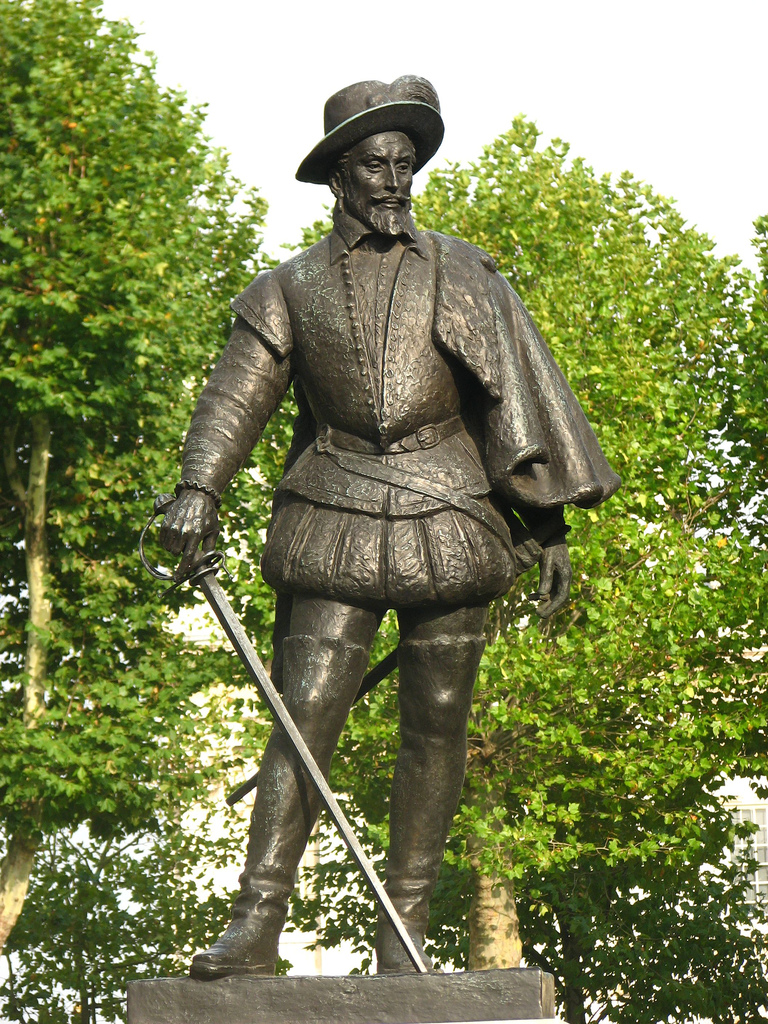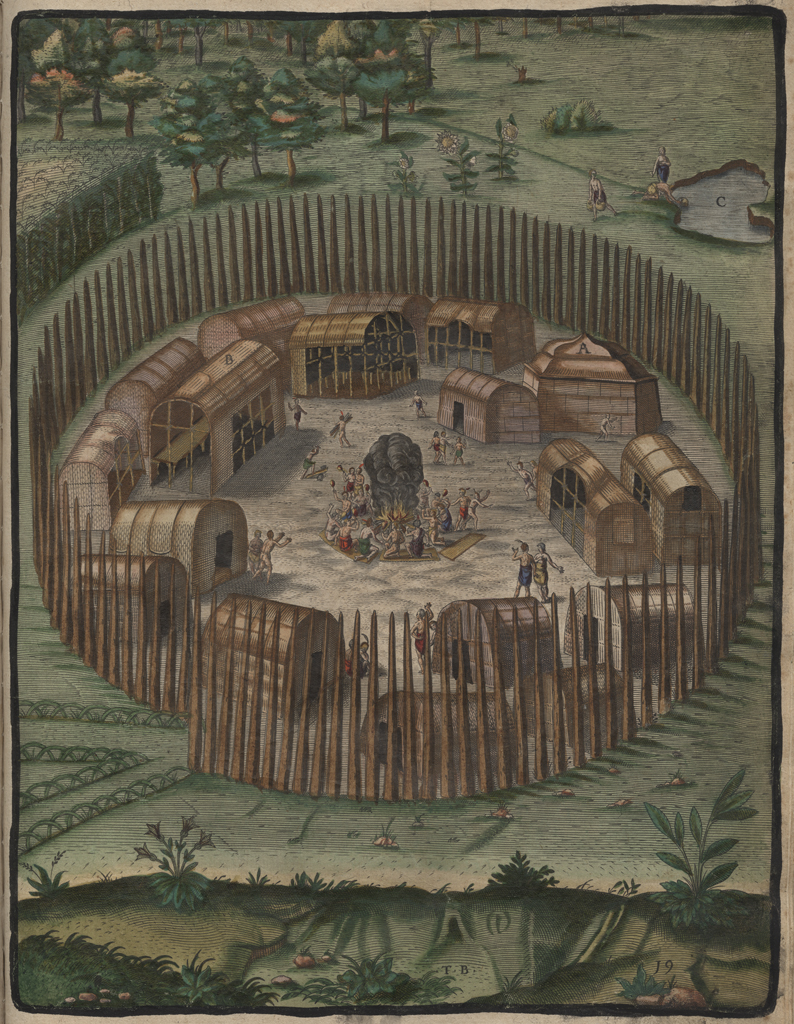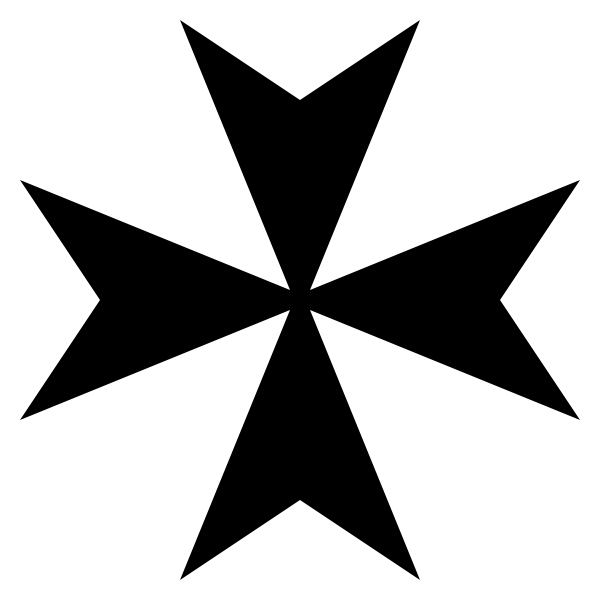England's first two settlements in the New World differed in character and purpose: The first short-lived colony, inhabited entirely by men, was set up as a stake in the newly discovered Americas and a base of privateering against French and Spanish shipping. The second was intended as a permanent colony and was settled by men, women and children. Their disappearance is a mystery that remains unsolved nearly 400 years later.
Two settlements
After the changes wrought by four centuries, it is not easy to imagine the America seen by the small band of settlers who gained for England a foothold in the New World. They had left behind the comfortable limits and familiar rhythms of European civilization for a boundless and unpredictable world in which vigilance, courage, and endurance were needed just to survive.
Their colony on Roanoke Island played a part in a broader historical event: the expansion of the known world. In the century after Columbus' voyage had put a new continent on the map, Europe's seagoing nations rushed to participate in the discoveries to claim part of the prize. England was something of a latecomer to the race for the New World. By the time the English began to send out voyages of exploration, Spain was already entered into what is now Florida and Mexico. English privateers had been sailing to the North American coast since 1562, the trans-Atlantic slave trade and preying on Spanish shipping loaded with royal loot from Mexico. No one, though, had seriously considered a colony in North America until 1578, when Sir Humphrey Gilbert, armed with a charter from Queen Elizabeth "to inhabit and possess...all remote and heathen lands not in actual possession of any Christian prince," made the first two attempts to reach Newfoundland. After he died on the second voyage, Sir Walter Raleigh, his half-brother, decided to carry on the venture, and obtained a similar charter from the queen. Reports from his expedition in 1584 sang the praises of the rich land, and by the middle of the following year, England had made its first tentative move to transplant English culture to foreign soil. The new colony was called "Virginia," after the Virgin Queen.
England's motives for settling the New World ranged from the mercenary to the idealistic. One of the primary spurs, at least for Raleigh, was the prospect of an ideal base for forays against French and Spanish shipping. Publicist Richard Hakluyt conjured up visions of gold and copper mines and cash crops, which fit neatly with Gilbert's plan to put "needy people" to work there. The anticipated Northwest Passage was another strong lure. Finally, like Spain's efforts to make the New World Catholic, England wanted to spread the new Protestant religion among the "savages" — to claim the land for God and Queen, although not necessarily in that order. In a sense the two settlements at Fort Raleigh represented England's schooling in establishing a colony. The first was more like the Spanish operation — militaristic, dependent on the home country, and exploitative of the Native Americans. The second was intended to be a permanent colony, with women and children, fewer soldiers, and a sounder agricultural base. Although all of the settlers who were to have built "The Cittie of Raleigh" disappeared, their dream of an English home in the New World was realized twenty years later at Jamestown.
Hopeful explorations
On April 27, 1584, Captains Philip Amadas and Arthur Barlowe left the west coast of England in two ships to explore the North American coast for Sir Walter Raleigh. The party of explorers landed on July 13, 1584, on the North Carolina coast just north of Roanoke Island, and claimed the land in the name of Queen Elizabeth. Barlowe wrote that the land they found was
very sandie and low toward the waters side, but so full of grapes as the very beating and surge of the Sea overflowed them, of which we found such plentie, as well there as in all places else, both on the sand and on the greene soil on the hils, as in the plaines, as well on every little shrubbe, as also climing towards the tops of high Cedars, that I thinke in all the world the like abundance is not to be found.
Three days later they were met by Granganimeo, brother of Wingina, chief of the Roanoke Island Indians, who had perhaps heard the Englishmen's guns, which they had fired soon after landing. They traded with the Indians for several days and invited them aboard their ships. Then Amadas, Barlowe, and seven of their men accompanied Granganimeo to Roanoke Island, where the Indians entertained the Englishmen in their palisaded village. The Indians, Barlowe said, were "gentle, loving, and faithfull," and the island was "a most pleasant and fertile ground, replenished with goodly Cedars, and divers other sweete woods, full of Corrants {grapes}, flaxe, and many other notable commodities," as well as plenty of fish and game. The earth seemed to bring forth "all things in aboundance, as in the first creation [the Garden of Eden], without toile or labour." Roanoke seemed the perfect location for an English colony.
But Amadas and Barlowe had landed in the middle of summer, when the Indians had plenty of food to share, and the Roanoke Indians, having never seen white men before, were as fascinated by the explorers as the explorers were by them. The report Amadas and Barlowe took back to Raleigh would turn out to be overly optimistic. They also took back two Roanoke Indians, Wanchese and Manteo, so that Raleigh could meet the native people for himself, learn more about them, and make plans for his settlers to live among them. Wanchese and Manteo went willingly - the Roanoke Indians, like the English, wanted friendly relations and to learn more about these strange new people. They returned to Roanoke in 1587 with the second group of settlers from England.
The first colony: Harsh lessons
After Captains Amadas and Barlowe returned in 1584 from their expedition to the New World with reports of "a most Pleasant and fertile ground," Sir Walter Raleigh had little trouble getting the Queen and a number of other investors to back his colony. In the spring of 1585, 500 men — 108 of them colonists — set sail for Virginia in seven ships commanded by Raleigh's cousin, Sir Richard Grenville. After weeks of searching (and privateering), they found, with the help of nearby Indians, a fertile, well-watered, and defensible spot on Roanoke Island. Ralph Lane was named Governor of the colony, and the settlers immediately set to work in building a fort for defense against the Spanish.
Although the colonists established a trading relationship with the Indians, they soon realized that, with the coming of winter, providing for themselves would not be easy. Many supplies had been lost when one of the ships ran aground, and since they cultivated little land, the colonists soon grew dependent on the Indians, cadging food and robbing their fish traps. But as winter deepened, the Indians had less food to spare, and in any case were growing tired of trinkets. Disenchantment set in, especially after measles and smallpox brought by the settlers began to kill the Indians.
By 1586 the colonists were anxious to relocate. Lane had concluded that the site wasn't suitable as a privateering base, and tales of Indian gold and a possible northwest passage were circulating. So in late winter Lane took a party up Albemarle Sound. Chief Wingina saw a chance to rid himself of the demanding colonists. He told inland tribes that Lane planned to attack them, so they deserted their villages, depriving Lane's party of food. But Lane made it back to the colony, and by late spring there were open battles. When a member of a friendly tribe warned Lane that Wingina planned an assault on the island, Lane arranged for a parley with Wingina and other Indian leaders. But at a prearranged signal, the English opened fire. Wingina was killed and beheaded.
A week later Sir Francis Drake's privateering fleet was sighted. His offer of the ship Francis was readily accepted, because Grenville, due by Easter with supplies, had never arrived. Lane knew that "it was unlikely that he would come at all," as his ships would probably be pressed into service against the Spanish. With the Francis, the colonists could return to England after Lane had finished his explorations. But a storm forced the ship, loaded with supplies and several of the colony's most responsible members, to leave the harbor and sail for England. Demoralized, Lane and the colonists decided to leave with Drake.
Two days later a supply ship sent by Raleigh arrived. Grenville himself finally arrived two weeks later, only to find a deserted settlement. After searching the island, he left 15 men to guard the settlement until a new group of colonists could be recruited.
The Lost Colony: A silent "cittie"
By 1586, Raleigh was already planning another colony in Virginia. This one would be more ambitious, with its own coat of arms and the title, "Cittie of Ralegh." It would be agrarian rather than militaristic, less an adventure than a commitment. Raleigh's decision to locate it on the lower end of the Chesapeake Bay was prompted by Lane's report of friendly Indians and a good natural harbor. The inclusion of 17 women and 9 children among the 110 colonists would make this a long-term, self-perpetuating settlement. Instead of wages, each settler was deeded a 50-acre plot, thereby giving him a stake in the undertaking. John White, the artist who had accompanied the first voyage, was appointed Governor, to be aided by 12 assistants.
When the three ships sailed in May of 1587, the plan was to stop briefly at Roanoke Island to resupply Grenville's party. But when they arrived in July, the pilot Fernandez insisted that it was too late in the summer to go further, and the colonists were left at Roanoke. It wasn't an auspicious beginning. They had already failed to pick up salt and fruit in Haiti, and the Indians' hostility had not cooled since the first group had left. They had attacked the men left by Grenville, White reported "We found none of them sauing onely we found the bones of one of those fifteene." Through Manteo, who had visited England and was appointed "Lord of Roanoke" by the English, White arranged a peace conference, but a misunderstanding of the date made poor relations worse. Thinking the Indians had rejected their offer, the colonists attacked what they mistakenly thought was a hostile village, killing one Indian. After the incident the two cultures coexisted uneasily.
White's burdens were lightened when his daughter gave birth in August to Virginia Dare, the first English child born in the New World. A week later, however, he was forced to return to England for badly needed supplies. But upon arrival, his ship was pressed into service against the threat of the Spanish Armada, the massive fleet that King Philip II of Spain was preparing to send against England. All White could do was petition the Queen through Raleigh and wait.
Finally, in 1590, he got passage on a privateering voyage. As the party stepped ashore, there was no sign of the colonists except the letters "CRO" carved on a tree. When they approached the settlement, there was only silence. The houses had been taken down and a palisade constructed, on one post of which was carved "CROATAN," the name of a nearby island. The colonists had agreed on this kind of message if they had to leave Roanoke, but there was no Maltese cross, the signal that trouble had forced their departure. White's armour lay rusting in the sand, indicating that the colonists had been gone for some time. He wanted to sail to Croataon, but low provisions, the loss of sea anchors in a storm, and privateer's impatience prevented them from stopping there. Raleigh made several attempts to locate the colonists between 1590 and 1602, but no trace was found. Their fate will probably never be known. It is likely that they were attacked by Indians, and those not killed were assimilated into the local tribes.



